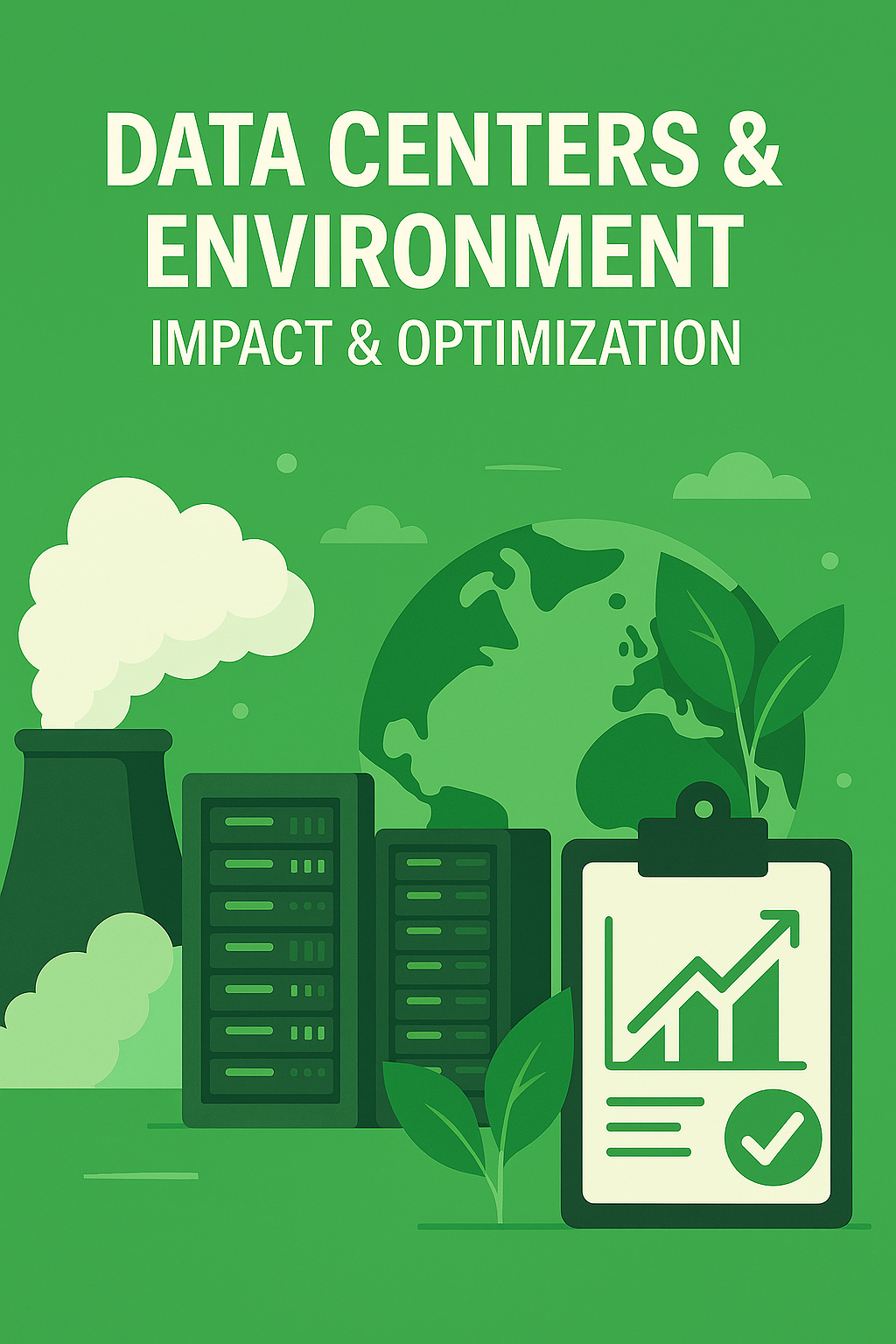
In today’s digital era, data centers are the invisible engines powering everything from social media and online shopping to AI systems and cloud storage. However, behind this technological progress lies a growing environmental concern. Data centers, while essential to modern infrastructure, are notorious for their high energy consumption and carbon emissions. As global data usage continues to skyrocket, the need to understand—and mitigate—the environmental impact of data centers has never been more urgent.
Understanding the Environmental Footprint of Data Centers
Data centers house servers, networking hardware, and storage systems that require continuous power and cooling. Their environmental impact stems from three primary factors:
1. Energy Consumption
According to the International Energy Agency (IEA), data centers consumed approximately 1-1.5% of global electricity demand in 2023. With increasing reliance on cloud computing, IoT devices, and AI technologies, this percentage is expected to grow significantly in the coming decade.
Major hyperscale data centers can use as much electricity as small towns. For example, a single Google or Amazon data center can require hundreds of megawatts of power—equivalent to the energy needs of over 100,000 homes.
2. Carbon Emissions
Unless powered by renewable energy, the electricity consumed by data centers contributes directly to carbon dioxide emissions. In regions where coal and natural gas are still major energy sources, data centers have a high carbon footprint. According to a 2022 study by Nature, the global ICT ecosystem could account for up to 14% of global greenhouse gas emissions by 2040 if left unchecked.
3. Water Usage
Cooling systems in data centers often rely on water-intensive processes. It’s estimated that some facilities consume millions of gallons of water annually to prevent overheating. In water-scarce regions, this presents serious ecological concerns.
Key Drivers Behind the Growth of Data Centers
Understanding what fuels the rapid expansion of data centers helps contextualize their impact:
- Cloud computing adoption: Businesses of all sizes are migrating to cloud platforms.
- Streaming services: High-definition content and 24/7 access increase data loads.
- AI and machine learning: Training large models (like ChatGPT) requires immense computational resources.
- Remote work and global connectivity: The shift to online collaboration and digital infrastructure contributes to the demand for more storage and bandwidth.
Strategies to Reduce Environmental Impact
Fortunately, the tech industry is actively seeking solutions to reduce the ecological footprint of data centers. Here are several innovative strategies and technologies leading the way:
1. Renewable Energy Integration
Tech giants like Google, Microsoft, and Meta are investing heavily in renewable energy. Google has committed to operating all of its data centers on carbon-free energy 24/7 by 2030. By partnering with wind and solar farms, companies can significantly reduce emissions from electricity use.
2. AI and Machine Learning for Optimization
AI can monitor data center operations in real time, optimizing cooling systems and energy distribution. For instance, Google DeepMind reduced its data center cooling bill by 40% using AI.
3. Liquid Cooling and Advanced HVAC Systems
Traditional air cooling is inefficient and energy-intensive. Liquid cooling solutions, which use water or specialized fluids to absorb heat directly from components, are emerging as a more efficient alternative. Immersion cooling, where servers are submerged in thermally conductive liquid, is gaining traction.
4. Modular and Edge Data Centers
Edge computing reduces the need for massive centralized data centers by processing data closer to the source. This not only reduces latency but also decreases the need for energy-intensive infrastructure in core data hubs.
5. Carbon Offsetting and Green Building Certifications
Many companies are investing in carbon offset programs and designing facilities to meet green building standards like LEED (Leadership in Energy and Environmental Design). These efforts help neutralize emissions and promote sustainable architecture.
Real-World Examples of Green Data Centers
- Microsoft’s Project Natick: This experimental data center was submerged off the coast of Scotland, using the ocean for natural cooling and proving highly energy-efficient.
- Facebook’s Luleå Data Center (Sweden): Powered entirely by hydroelectric energy and cooled by the Arctic air, this facility is one of the greenest in the world.
- Apple’s iCloud Data Centers: Operate on 100% renewable energy and utilize on-site solar farms and fuel cells.
Policy and Regulation
Governments are starting to take notice. In the EU, the European Green Deal includes measures to ensure data centers are climate neutral by 2030. In the U.S., several states offer tax incentives for using renewable energy in data infrastructure. Regulatory pressure is pushing companies toward greater accountability and transparency regarding energy use.
What Can Smaller Companies and Developers Do?
You don’t have to be a tech giant to make a difference. Here’s how smaller organizations and developers can contribute:
- Choose green hosting providers that use renewable energy.
- Optimize websites and applications for lower bandwidth usage.
- Use content delivery networks (CDNs) to reduce data load on central servers.
- Monitor and analyze server performance to avoid over-provisioning.
The Road Ahead: Toward Sustainable Digital Infrastructure
As our reliance on digital services continues to grow, the need for environmentally responsible data management becomes more pressing. While optimization technologies and renewable energy integration offer promising solutions, achieving true sustainability will require a concerted effort from businesses, governments, and individuals alike.
The transformation of data centers from energy guzzlers to green beacons is not only possible—it’s already underway. By continuing to innovate and adopt sustainable practices, we can build a digital future that’s both powerful and planet-friendly.





